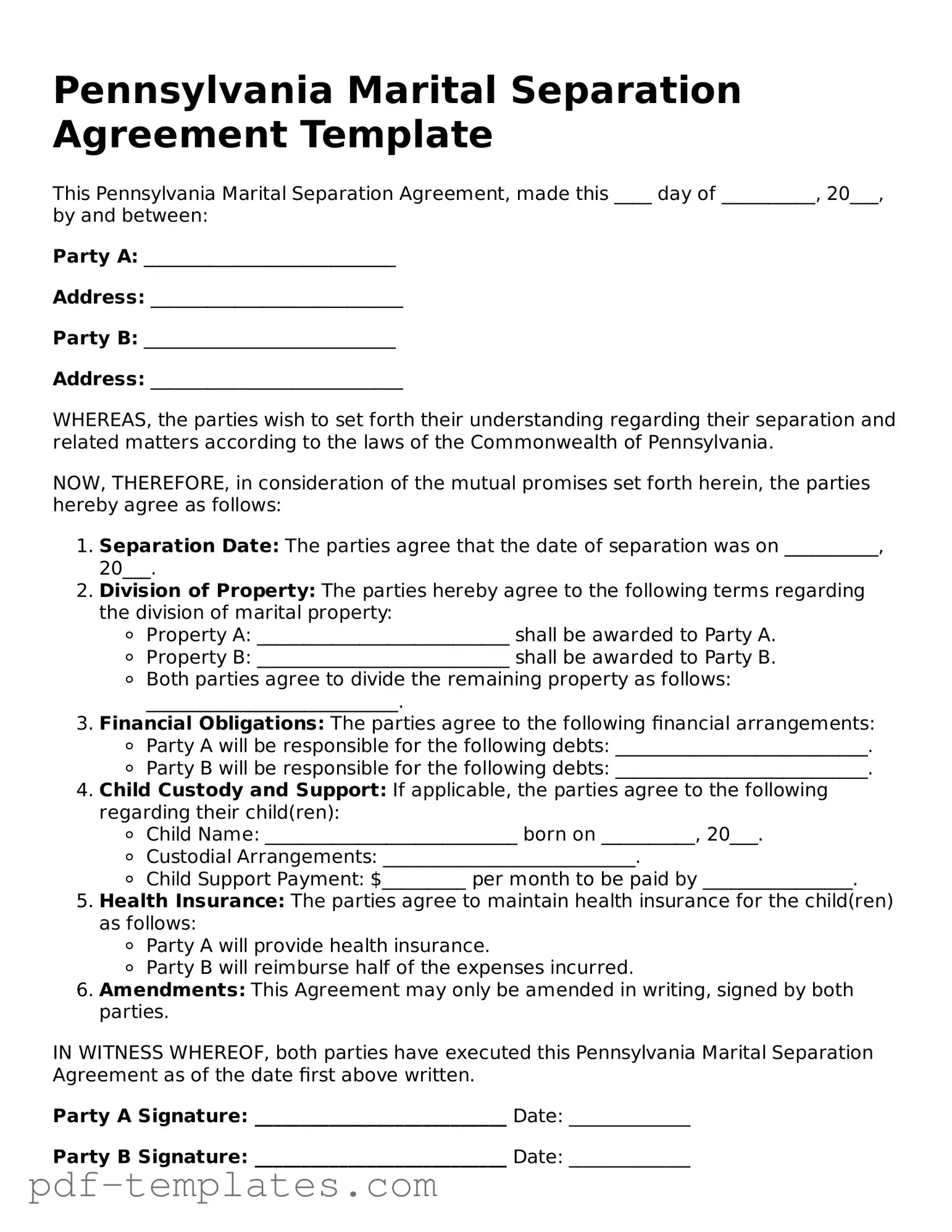The Pennsylvania Marital Separation Agreement is similar to a Divorce Settlement Agreement. Both documents outline the terms of a couple's separation or divorce, addressing issues such as property division, child custody, and spousal support. While a marital separation agreement is often used when couples decide to live apart without immediately filing for divorce, a divorce settlement agreement finalizes the terms once the divorce is granted. Each document serves to protect the interests of both parties, ensuring clarity and reducing potential conflicts down the line.
Another document that shares similarities with the Pennsylvania Marital Separation Agreement is the Child Custody Agreement. This agreement focuses specifically on the arrangements for children following a separation or divorce. It details custody arrangements, visitation schedules, and responsibilities for both parents. While the marital separation agreement may include child custody provisions, the child custody agreement emphasizes the welfare of the children and aims to provide a stable environment, making it crucial for parents to communicate effectively during this process.
Understanding the nuances of various legal documents is crucial for individuals navigating personal situations such as separation or divorce. For instance, a Trailer Bill of Sale form is vital for those transferring trailer ownership, ensuring clarity in the transaction. Such forms, much like the Divorce Agreement or the Cohabitation Agreement, help prevent ambiguities that could lead to disputes later on. You can find a template for this important document at documentonline.org/blank-trailer-bill-of-sale/, which can aid in facilitating smooth ownership transfers.
The Prenuptial Agreement also bears resemblance to the Marital Separation Agreement. A prenuptial agreement is created before marriage and outlines how assets and responsibilities will be handled in the event of a separation or divorce. While the marital separation agreement is drafted during or after the marriage, both documents serve to clarify financial responsibilities and asset division. They help prevent disputes and provide a roadmap for couples to follow, regardless of their marital status.
Lastly, the Cohabitation Agreement is another document akin to the Pennsylvania Marital Separation Agreement. This agreement is designed for couples who live together but are not married. It outlines the rights and responsibilities of each partner regarding property, finances, and other shared matters. Similar to a marital separation agreement, it can address how assets will be divided if the relationship ends. Both agreements aim to protect the interests of individuals and provide a clear framework for managing shared responsibilities, fostering a sense of security in the relationship.
